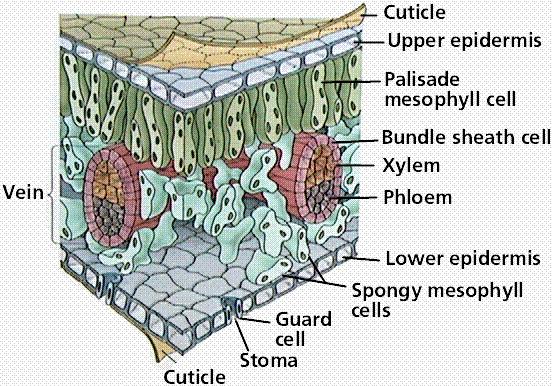Parenchyma
The type of plant cell which retains life even after attaining maturity is parenchyma. Parenchyma cells mostly constitute the ground tissue and vascular tissues. Parenchyma cells aid in the photosynthetic process as well as in the storage of food materials. There are two subtypes of parenchyma cells called as palisade parenchyma and spongy mesophyll cells.
The palisade parenchyma cells are present as elongated cells in most of the leaves and they are situated just below the epidermal layer. The palisade cells can exist in one or two layers. The spongy parenchyma cells situated in the mesophyll tissue are present below the palisade layer.
Another type of parenchyma cells are Ray parenchyma. They form part of the rays seen in woods. The Ray parenchyma cells aid in transferring substances in the lateral manner inside the woody stem. The xylem and phloem cells of the vascular bundles also comprises of parenchyma cells. The pith region is known to be comprising of large sized parenchyma cells. The cells of this size are usually seen in the stems of corn. They are larger in size than the cells occupying the vascular bundles. Parenchyma cells that are observed on the slides after staining appear green.
Collenchyma
Collenchyma cell types are present in the plants to offer support to the plant. The collenchyma cells are unique in their appearance with thickening in their walls. These cells also are seen to be living even on maturity. The collenchyma cells form part of the vascular bundles and are also present in the angular stem corners. They appear in red color on the slides when they are stained.
Sclerenchyma
The sclerencyma cells are also helpful in giving support to the plant. The secondary walls of the sclerenchyma cells are thickened. The mature sclerenchyma cells die at maturity. They also stain red on the slides. The plant tissue, which constitutes sclerenchyma cells most commonly is fiber. The sclereids present in the pear fruit give strength to the fruits. The sclereides are also called as stone cells.


No comments:
Post a Comment